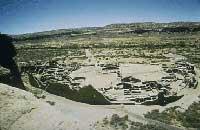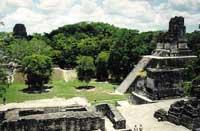Reading in wood information about anasazi culture
2001/09/25 Roa Zubia, Guillermo - Elhuyar Zientzia
Through remains of wooden houses, the ancient American culture has been analyzed.
What is today the desert of New Mexico, 1,500 years ago, was a fertile territory subjected to the anasazi civilization. Archaeologists from the University of Arizona analyze the remains of the people built by this civilization in the Chaco canyon. For the construction of this village, the anasazi brought 200,000 trunks on a journey of 80 kilometers to the canyon.
The Anasazi civilization arrived in New Mexico around 550, where it remained for about three hundred years until due to the continuous droughts it had to migrate to other places.

Archaeologists have found 12 houses of wood and limestone, among others, and scientists have sought the origin of this wood. For this purpose, the metal strontium atoms present in the wood, that is, their number and class, have been analyzed.
This wood could supposedly be three-part: Chuskakoa and St. Matthew and St. Peter. But according to the results of the research, only the first two were taken by the anasazi. The mountains of St. Peter were as close as the other two, but they were not exploited. According to some scientists, this means that no construction trees were found in the latter, while others consider that non-exploitation is a consequence of relations with neighboring peoples.
The study of plant footprints is a new application of strontium analysis, which scientists will continue to use for the analysis of other residues. For example, the remains of corn collected in the same village will be analyzed.

Gai honi buruzko eduki gehiago
Elhuyarrek garatutako teknologia






